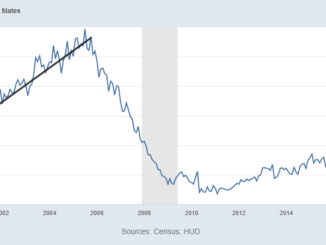
Mortgage rates were scarier than Freddy Krueger last week, rising to a 23-year high as some of the labor data surprised to the upside. Unfortunately, those higher mortgage rates didn’t spur inventory growth this week, so we didn’t even get the benefit we would usually see when rates rise. And higher mortgage rates pushed purchase application data down 6% week to week.
Weekly housing inventory data
One of the inventory calls I have gotten wrong this year is the premise that as mortgage rates rise, especially above 7%, active inventory would grow between 11,000 and 17,000 for at least a few weeks. Not only has that not happened, but in the last two weeks, with mortgage rates pushing even higher, active inventory only grew by 2,286 single-family homes.
Last year, the seasonal peak for inventory was Oct. 28. Last week, according to Altos Research:
Weekly inventory change (Sept. 29-Oct. 6): Inventory rose from 534,746 to 537,032
Same week last year (Sept. 30-Oct. 7): Inventory rose from 561,229 to 562,249
The inventory bottom for 2022 was 240,194
The inventory peak for 2023 so far is 537,032
For context, active listings for this week in 2015 were 1,168,416
New listings data has been trending at the lowest levels recorded in history for over 13 months but at least it’s been an orderly decline. I recently talked on CNBC about how we should see some flat to positive data soon. Last week, new listings increased slightly year over year, but they are still trending at the lowest levels ever. If there is any glass-half-full for 2023, it’s that new listings data hasn’t dropped even lower, despite rates being higher this year than last.
Here’s the new listings data for this week on a year over year basis:
2023: 58,103
2022: 58,083
One housing data line that people don’t know is that, normally, one-third of all homes have price cuts every year. Last week’s price cuts were lower than the same time last year by 4%. This is surprising to a lot of people because mortgage rates and home prices are higher now than last year.
The best way to explain why price cut percentages are lower year over year, even with higher rates, is that home sales aren’t crashing like last year; they’re slowly lowering this year, and inventory is still negative yearly.
The percentage of price cuts for the same week over the last few years:
2021: 29%
2022: 42%
2023: 38%
Mortgage rates and the 10-year yield
It was an ugly week for mortgage rates. We had four key labor reports and the three most important ones all looked good, and the least valuable one looked soft. I wrote about the job openings report and surging mortgage rates here. I also wrote about jobs Friday and how that report had an immediate impact on the bond market.
The bond market volatility is historically wild right now as bond selling has been very strong lately. This is an oversold market in the short term, which means we should see a rally in bonds soon. For now, I am only focusing on the 4.87% level on the 10-year yield because that is the level it reached during overnight trading sessions this week. It tried to break above this level on Friday, after the stronger-than-anticipated jobs report, but it didn’t happen.
Purchase application data
Purchase application data was 6% lower last week versus the previous week, making the year-to-date count 17 positive prints, 20 negative prints, and one flat week. If we start from Nov. 9, 2022, it’s been 24 positive prints versus 20 negative prints and one flat week. However, the week-to-week data has been weaker once rates passed 7%, and we will see that in the data lines going out in the future.
The week ahead: It’s inflation week!
This week, we will get the CPI and PPI inflation data report and the all-important jobless claims data. We could definitely use a boring week, but with the inflation data being critical to the Federal Reserve, that’s not likely to happen.
Again, I understand how some are frustrated that mortgage rates are still rising with the growth rate of inflation falling. This is why in 2023, my focus has been on the labor market and jobless claims data. Jobless claims data has been getting better for months now.
During this time, mortgage rates and the bond market have been heading higher. I don’t believe this would have been the case if jobless claims were trending the other way. In any case, buckle up — it’s going to be another crazy week. And unfortunately, we now have an X factor variable: geopolitical risk rose this weekend with Israel’s prime minister declaring the country was at war after a large-scale Palestinian rocket attack. We have to keep an eye on what is happening what is happening with that conflict and see if it expands into a bigger geopolitical situation, which could affect global markets.



